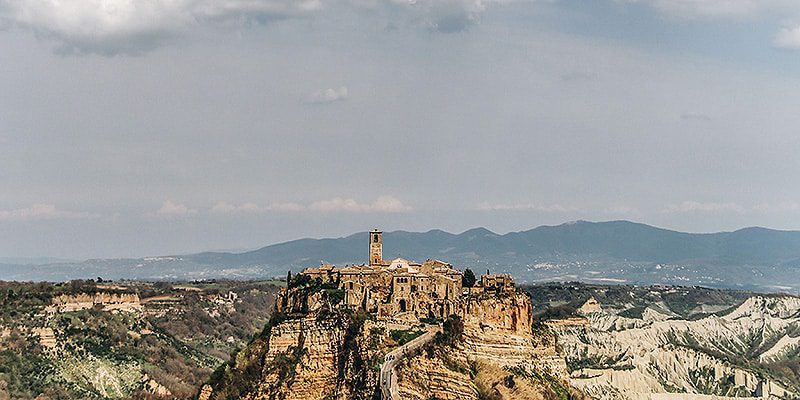3 Best Day Trips from Rome

Here’s our best 3 ideas for actual day trips departing from Rome! Image by Split Shire, sourced from Pixabay
With Rome being one of the best connected train, plane and bus hubs of Italy, it’s very convenient to use the Urbs Aeterna as a springboard to travel to other cities, even outside the country.
What’s more, tickets are generally very cheap, even when not bought in advance, so with very little planning it’s absolutely possible to take a variety of day trips from Rome, so as to explore more of Italy and add different layers to your travel experience in the country – and this without breaking the bank!
In making this list, I decided to exclude popular day trips that to me would require their own holiday: so, for instance, I determined that Florence did not fit my day trip recommendations list.
Don’t get me wrong: there are many people who do travel to Tuscany and come back in less than one day, but maybe they have little time available and so they make do with what they have. Getting to Florence quickly from Rome is absolutely doable, thanks to the amount of high-speed trains available, but there is so much to see there that one should stick around for at least 2 days, the bare minimum to simply scratch the surface of that Renaissance jewel!
For similar reasons I didn’t include Bologna, nor Naples or Pompeii and Ercolano. Day trips should not exhaust you and so, with that in mind, I went for places that are easily reachable, close to Rome and small enough to be explored without feeling the need to rush. Happy travels!
1. Orvieto: loved by the Popes

The tuff plateau on which the old city of Orvieto sits, image by Valter Cirillo sourced from Pixabay
Considered the gateway to the Umbria region, as it’s so quickly reachable from Rome, Orvieto is immediately recognizable because it sits on top of a volcanic butte, just like many other towns and villages in the same area.
A former Etruscan metropolis, it was vanquished by the Romans, while during the Middle Ages it became a safe haven for popes due to its natural fortress features.
Because of these three distinct historical influences, and because Orvieto couldn’t really expand beyond its surface until the 19th century (more modern buildings, as well as the train station, lie at the base of the butte), the old city is beautifully preserved, with layers of history worth exploring. Also, because of this, Orvieto is often chosen as the best authentic backdrop for shooting period pieces.
If you pick Orvieto for your day trip, I recommend visiting at the very least the magnificent Cathedral, the medieval Fortezza dell’Albornoz (the Albornoz garrison) and the underground system of tunnels, largely dating back to the Etruscan era and used for escaping sieges as well as storing food.
Speaking of which: Orvieto is famous for its traditional recipes! When visiting, try to eat & drink local! The city is famous for its wine, for its truffle-based recipes, for its hand-made pasta (ask for “umbricelli“!)
Explore the menus and you will find many dishes that are specific to the city, on account of just how many times the population had to endure long sieges: these include a chickpea and chestnut soup, pigeons cooked in wine and pumpkin flower fritters, among others.
This day trip is best done by train (there is one roughly every hour, operated by Trenitalia, departing from Roma Termini)
bus rides are also available, leaving from the hub outside the train station at Roma Tiburtina.
travel time can vary from 1 hour 15 to under 2 hours, depending on travel mode.
2. Tivoli: gardens galore!
In spite of having just under 60,000 inhabitants, Tivoli can boast two Unesco World Heritage sites in its territory: Villa Adriana (Hadrian’s Villa) and Villa d’Este. One other major site not on the Unesco list, but still extremely famous is also in Tivoli: Villa Gregoriana.
Why are these three outdoors attractions all in the same town?
A bit of a digression is in order: as with Roman parks whose names begin with “villa” (see this post), these attractions are called “Villa” because they used to be grand mansions complemented by parks and gardens.
Because they were established in different centuries, even in different millennia, their appearance is very different: Villa d’Este is a beautiful, and possibly the most famous, Italian-style garden with water fountains and Renaissance masterpieces; Villa Gregoriana features a forest with waterfalls; Villa Adriana is a huge archaeological park, with excavations still ongoing to this day.
The term “Villa” has remained to signify a palace established away from the city, where owners could relax and enjoy nature and a simpler way of life. Of course, and such is the case with many villas, the cities grew around them overtime and that “out of the way quality” was lost.
Even in ancient Rome, this is what Tivoli was famous for – it was remote and it had a “resort” quality to it, thanks to the pristine waters of the river Aniene (the second largest river to flow through Rome, incidentally!), and the rich and famous were in competition to have their summer residences built there.
Most of them have gone lost, but thankfully not the most important ones. They can also help us get an idea of what attracted ancient Romans, and those who came after them, to this place.
I recommend visiting Hadrian’s Villa first, if anything because it makes sense, chronologically-wise, to start with what is more ancient in the area.
I then suggest you proceed to Villa D’Este, and for one reason mainly: Cardinal Ippolito d’Este, the creator and first owner of the Villa d’Este, pillaged and stripped Villa Adriana of many of its statues and marbles so as to use them in his own palazzo. So by walking in the Villa D’Este today, you can maybe get to imagine what Hadrian’s Villa was like in its fullest glory.
Finally, complete your day trip with Villa Gregoriana, which is closer to the train station in Tivoli (many visitors also decide to skip it altogether because they’re too tired at this point).
Although there are a couple of trains to Tivoli departing from Roma Termini, the main train station to connect the city with the town is Roma Tiburtina, easily reachable by the B line subway. Trains to Tivoli usually leave every 30 minutes from the “Piazzale Est” area of the Roma Tiburtina station and either end their ride at that station or continue towards Avezzano, Sulmona or Pescara. All trains are operated by Trenitalia and take under one hour to reach the city.
Taking a train is the fastest way to reach both Villa D’Este and Villa Gregoriana, as they’re in Tivoli proper. Hadrian’s Villa, on the other hand, is closer to an area called “Bagni di Tivoli”, so you can either get off the train at this station and then take a bus from there, or you can board directly said bus, departing from the “Ponte Mammolo” subway stop: look for blue buses marked “Cotral” and ask the driver where you should be getting off (once in Tivoli, the closest stop to the Villa is roughly 300 meters from the entrance of the archaeological park).
Whether you choose to go by bus or train, know that Tivoli is part of the Lazio region, so it’s part of the Metrebus public transport network that covers all of it, which means you can buy a BIRG ticket, a 3-zones day pass that will cover all of your Trenitalia and Cotral transfers between Rome and Tivoli until midnight of the day when the ticket gets validated. Sounds complicated? It really isn’t: you can read something about it here.
3. Civita di Bagnoregio: the crumbling town
Lying at the edge between the Lazio and Umbria region, Civita di Bagnoregio is roughly 2 hours north of Rome, and provides invaluable insight into the fate of many formerly transit towns outside the Caput Mundi.
Civita di Bagnoregio, specifically, was the birthplace of popular saint St. Bonaventura, and close enough to the path of the Via Francigena pilgrim route that connects to this day Canterbury and the Eternal City, so it saw a huge number of merchants and faithfuls pass through its gates daily.
This until a number of earthquakes started hitting the town, which like Orvieto sits on top of a volcanic plateau of tuff – friable rock, which started crumbling in the below valley, taking the houses above with it.
A new city (simply named “Bagnoregio”) was built opposite the old one – that was eventually abandoned.

One of the few remaining businesses in Civita di Bagnoregio, image by Heidi Kaden sourced from Unsplash
Currently, just a handful of people live in Civita, and the old town is home to a number of restaurants and holiday homes, because it is enjoying some kind of a tourist revival, largely due to the pace at which erosion is progressing: people flock to Civita in the hopes of seeing its beautifully preserved Medieval buildings before they disappear.
At the same time, a campaign is ongoing to collect money for stopping or slowing the erosion process: so at the entrance of this little hamlet, you will be asked for some coins that go into this specific fund.
Civita di Bagnoregio is most easily reached by car, but if you don’t have access to one while in Rome, you can travel by train to either Viterbo or Orvieto and then complete your journey by bus (operated by the Cotral company, regardless of whether you board the bus in Orvieto or Viterbo).
The hamlet itself sits at the northern edge of the new city, and is only accessed through a pedestrian bridge (that’s where you pay the “toll”). The municipality of Bagnoregio has even created an app that is a wealth of information on monuments, restaurants and accommodation when you visit.
Planning a trip to Paris ? Get ready !
These are Amazon’s best-selling travel products that you may need for coming to Paris.
Bookstore
- The best travel book : Rick Steves – Paris 2023 – Learn more here
- Fodor’s Paris 2024 – Learn more here
Travel Gear
- Venture Pal Lightweight Backpack – Learn more here
- Samsonite Winfield 2 28″ Luggage – Learn more here
- Swig Savvy’s Stainless Steel Insulated Water Bottle – Learn more here
Check Amazon’s best-seller list for the most popular travel accessories. We sometimes read this list just to find out what new travel products people are buying.













